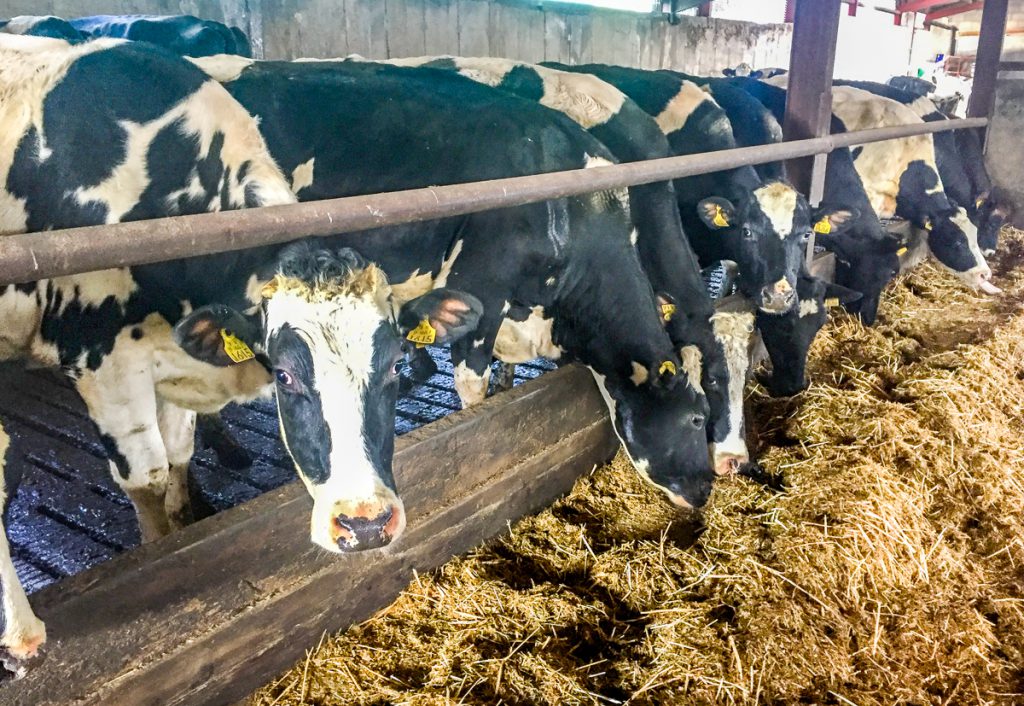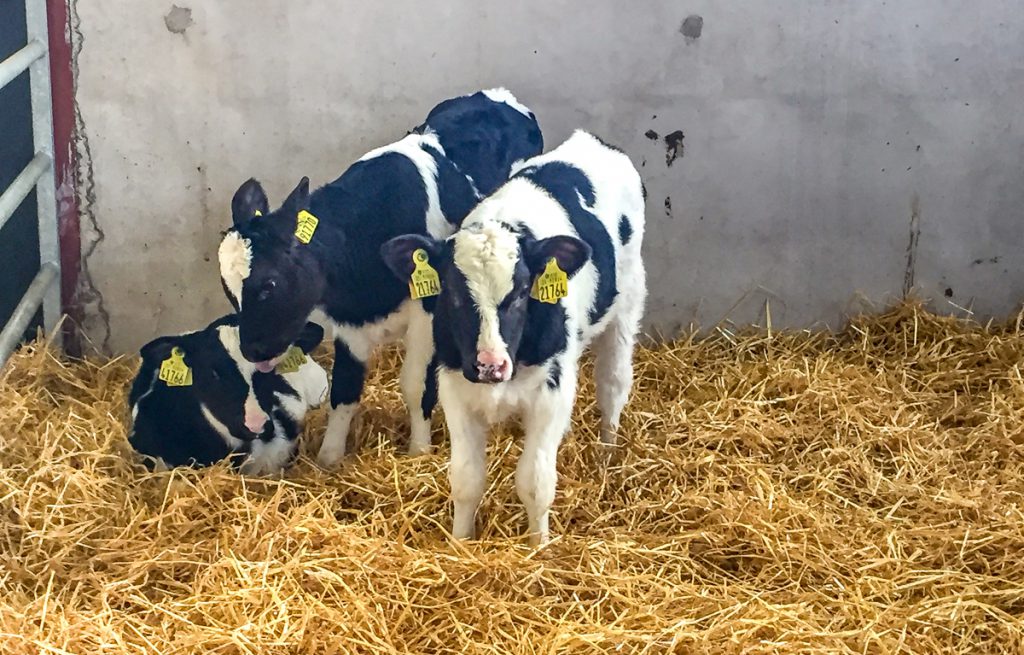For generations, the Sherry family has been milking cows on Co. Monaghan’s drumlin hills. Located in Drumhillock, the family’s Nine County pedigree Holstein herd takes pride of place on the 60ha holding.
Earlier this week, Dermot Sherry, and his family, opened the gates of his farm to almost 100 visitors as part of a LacPatrick calf event.
After operating a split-calving system for years, this spring marked a seismic change for the business; cows will only calve between late December and May.
Over recent years, the herd has slowly transitioned away from autumn calving. Previously, about 33% of the herd calved from September on. In 2016, the start of calving was delayed until November and calving only commenced on St. Stephen’s Day in 2017.
As it stands, 50% of the herd of 140 cows have calved. 100 cows (71% of the herd) will calve over the months of January and February. The remainder will calve in March, April and May.
Dermot explained: “I have changed to spring calving and calving started on December 26. But, the cows will start to calve in January next year.”
Why?
The reason why is simple; it comes down to financials. With the move, Dermot plans to produce more manufacturing milk, while also filling the farm’s 21,000L liquid milk contract.
Late-calving cows – April and May calvers – will be milked on to fill this contract; along with any empty cows in the herd.
This move will make the business more resilient to milk price fluctuations going forward; more milk will be produced from grazed grass rather than a total mixed ration (TMR) diet.
The cows and production
As it stands, Dermot is currently milking 90 cows – 65 fresh calvers and 25 late-lactation cows. The fresh cows are currently yielding 30L/day on a TMR diet of straw (0.5kg), concentrates (6kg) and silage.
We’ve always been Holstein Friesian, but we’ll probably change this year. We are going to use more Irish bulls because the creamery is paying on solids.
Dermot’s herd produced 7,000kg of milk per cow last year – at 3.82% fat and 3.25% protein – and he hopes to pull up solids production over the coming years.
Another area where Dermot hopes to improve on is the herd’s EBI (Economic Breeding Index). The majority of this year’s calves have a EBI of €100+ and Dermot feels there’s scope to push this further in the future.
Although the system is changing, his business is renowned for producing quality milk and he hopes to maintain standards going forward. In 2016, the LacPatrick supplier won the Origin Green Sustainable Producers Award for liquid milk.
Grass
Dermot is using grass measurement and management to improve the productivity of his farm. And, last year, the milking platform produced 15t/ha of grass.
However, given the farms location and soil type, grazing can prove challenging during the shoulders of the year and he targets 250 days at grass each year.
“We are farming 60ha and it’s very heavy and hilly ground. Generally cows go out to grass during the first week of March and are housed in November.
The 60ha is split into five blocks. There’s 23ha in the home block and 8ha one mile away, which we also walk cows to. There’s another three blocks located 2.5 miles and five miles away and we use them to rear heifers and for silage.
With the move to spring calving, there’s also scope to reduce the quantity of concentrates being offered to his cows. Across both the spring and autumn groups last year, 1,900kg of concentrate was offered to each individual cow in the herd.
Infrastructure
With the move to spring calving and more cows calving during the first two months of the year, the Monaghan-based farmer had to focus on the housing facilities on his farm.
“The calf shed is just finished. I had a number of small sheds previously and calves weren’t thriving in them. Ventilation was a huge issue.
“I knew I had to do something and we started building in July and the shed was finished by the end of November.”
All-in-all, the 100-calf shed cost around €80,000 to complete. It stood at €65,000 before final fixes and added extras – such as locking feed barriers. The shed was constructed through grant aid from the Targeted Agricultural Modernisation Scheme (TAMS) and the majority of work was completed by Seamus Fitzpatrick Construction.
The shed stands at 96ft long and 40ft wide and it encompasses an area for newborn calves, group pens, a hygiene area and cubicles for weaned calves.
He also has sufficient housing for cows and replacement heifers on the farm. Cows at the point of calving are housed adjacent to the calf shed, while cows in milk are housed in a slatted cubicle house adjoining the milking parlour.
A new parlour was constructed on the farm in 2012; it’s a 16-unit Dairymaster with the option to increase to 20 units if needed. A drafting system utilised and this proves useful during the breeding season.
The team
Dermot is married to Grace and they’ve three children – Tadhg, Logan and Sarah. His father Owen is still involved in the business on a day-to-day basis. Student labour is also taken on for a 12-week period during the spring.
“Apart from the out block, it’s pretty much a one-man system; that includes milking, drafting and feeding calves. Contractors are used for silage and slurry and a student comes from Ballyhaise College for 12 weeks in the spring,” he said.








